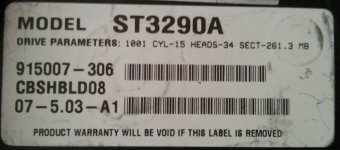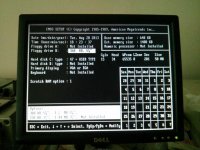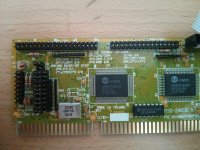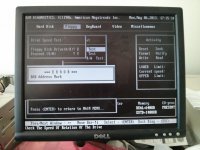RWallmow
Veteran Member
..the barrel battery was leaking, but was replaced.
Were there any corroded or damaged traces or IC pins where the battery leaked on the board?
..the barrel battery was leaking, but was replaced.
Were there any corroded or damaged traces or IC pins where the battery leaked on the board?


You are reading the HD Label wrong.None that I could see. I decided to give up on that board. I got another one, also with a Suntac chipset. The board is a Magitronic B236. The battery doesn't look like it's leaking, but there is a jumper on the board for an external battery. The board didn't come with any CPU or BIOS, so I had to use the chips from the other board. The good news is, the board passes the POST, but for some reason, it doesn't want to boot from any floppy disk. It doesn't really look like the computer is even trying to read the floppy disks I put in the drive, though the activity light does turn on. This is probably a controller problem. I need to figure out how to get a Seagate ST3290A 260 MB hard drive to work with this computer as well. A picture of the label on the hard drive listing the parameters is attached. The BIOS is AMI, and wants 'sectors' as well, but doesn't seem to want the number provided, as that's in megabytes. Any ideas on how to get the floppy drive and hard disk working?
Thanks!
View attachment 13101View attachment 13102
Floppy, I am not totally sure, if its set right, and still wont boot, and the drive is KNOWN to work, check the controller.
That BIOS does not detect floppies.
Have you tried to change the drive settings from the BIOS?If the computer does not "remember" the changes then check the battery with a multimeter (these motherboards used a ni-cd barrel type battery that is dead now).You can also use the external battery connector to connect a new battery.Also check the floppy controller-usually the disk drive is selected with jumpers-if you can post a photo from your floppy controller.Do you have another computer to try the controller there?

FWIW, it's surely *not* the battery.It's not likely the controller either. It's probably either the BIOS or something else on the motherboard. Pull the controller card and the erronious drive will probably still be there in the setup.

